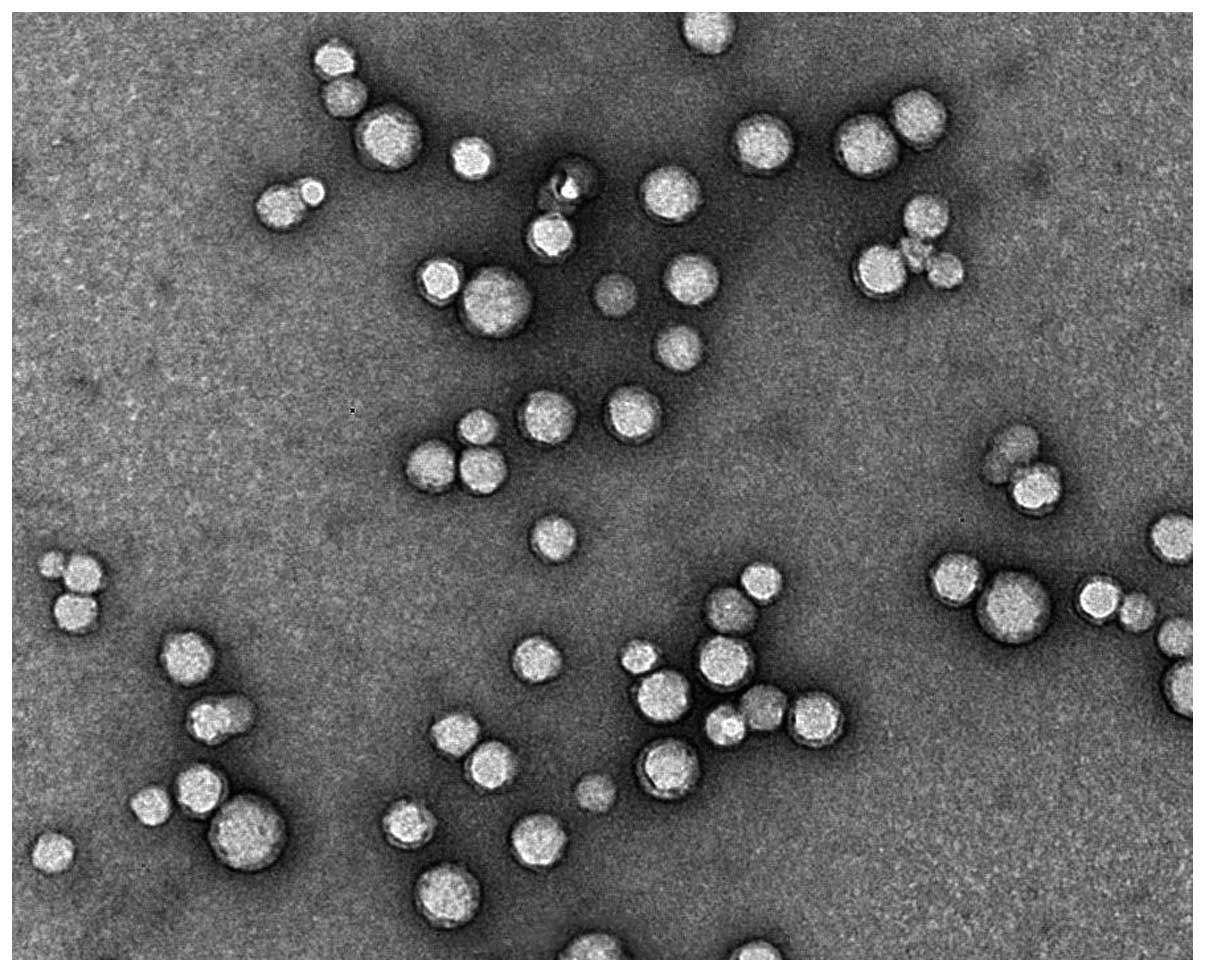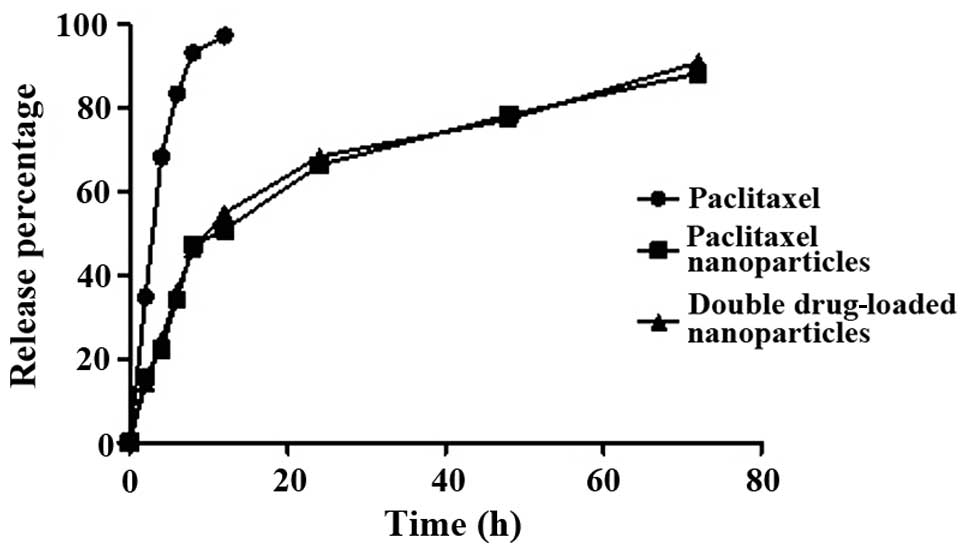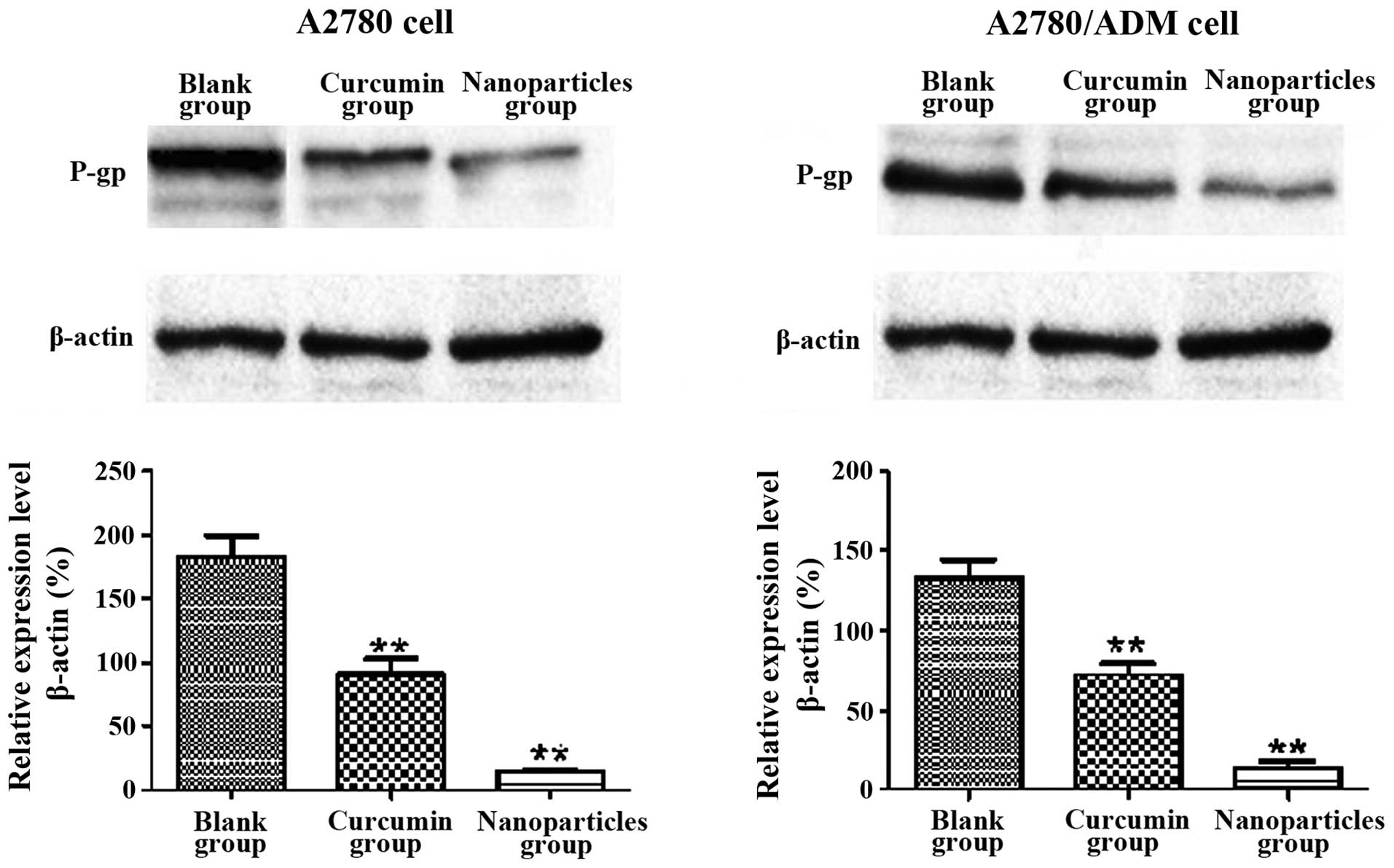|
1
|
Anton-Culver H, Cohen PF, Gildea ME and
Ziogas A: Characteristics of BRCA1 mutations in a population-based
case series of breast and ovarian cancer. Eur J Cancer.
36:1200–1208. 2000. View Article : Google Scholar : PubMed/NCBI
|
|
2
|
Bell DA: Origins and molecular pathology
of ovarian cancer. Mod Pathol. 18(Suppl 2): S19–S32. 2005.
View Article : Google Scholar : PubMed/NCBI
|
|
3
|
Stone GW, Ellis SG, Cox DA, Hermiller J,
O'Shaughnessy C, Mann JT, Turco M, Caputo R, Bergin P, Greenberg J,
et al: TAXUS-IV Investigators: A polymer-based, paclitaxel-eluting
stent in patients with coronary artery disease. N Engl J Med.
350:221–231. 2004. View Article : Google Scholar : PubMed/NCBI
|
|
4
|
Duvoix A, Blasius R, Delhalle S,
Schnekenburger M, Morceau F, Henry E, Dicato M and Diederich M:
Chemopreventive and therapeutic effects of curcumin. Cancer Lett.
223:181–190. 2005. View Article : Google Scholar : PubMed/NCBI
|
|
5
|
Fojo A, Hamilton TC, Young RC and Ozols
RF: Multidrug resistance in ovarian cancer. Cancer. 60(Suppl 8):
2075–2080. 1987. View Article : Google Scholar : PubMed/NCBI
|
|
6
|
Gillet JP, Efferth T and Remacle J:
Chemotherapy-induced resistance by ATP-binding cassette transporter
genes. Biochim Biophys Acta. 1775:237–262. 2007.PubMed/NCBI
|
|
7
|
Shaffer BC, Gillet JP, Patel C, Baer MR,
Bates SE and Gottesman MM: Drug resistance: still a daunting
challenge to the successful treatment of AML. Drug Resist Updat.
15:62–69. 2012. View Article : Google Scholar : PubMed/NCBI
|
|
8
|
Nabekura T, Yamaki T, Hiroi T, Ueno K and
Kitagawa S: Inhibition of anticancer drug efflux transporter
P-glycoprotein by rosemary phytochemicals. Pharmacol Res.
61:259–263. 2010. View Article : Google Scholar : PubMed/NCBI
|
|
9
|
Duncan R: Polymer conjugates as anticancer
nanomedicines. Nat Rev Cancer. 6:688–701. 2006. View Article : Google Scholar : PubMed/NCBI
|
|
10
|
Panyam J, Sahoo SK, Prabha S, Bargar T and
Labhasetwar V: Fluorescence and electron microscopy probes for
cellular and tissue uptake of poly(D, L-lactide-co-glycolide)
nanoparticles. Int J Pharm. 262:1–11. 2003. View Article : Google Scholar : PubMed/NCBI
|
|
11
|
van Vlerken LE and Amiji MM:
Multi-functional polymeric nanoparticles for tumour-targeted drug
delivery. Expert Opin Drug Deliv. 3:205–216. 2006. View Article : Google Scholar : PubMed/NCBI
|
|
12
|
Kumari A, Yadav SK and Yadav SC:
Biodegradable polymeric nanoparticles based drug delivery systems.
Colloids Surf B Biointerfaces. 75:1–18. 2010. View Article : Google Scholar : PubMed/NCBI
|
|
13
|
Alexis F, Pridgen E, Molnar LK and
Farokhzad OC: Factors affecting the clearance and biodistribution
of polymeric nanoparticles. Mol Pharm. 5:505–515. 2008. View Article : Google Scholar : PubMed/NCBI
|
|
14
|
Baratchi S, Kaur RK, Khoshmanesh K, Vasu
P, Ashok C, Hittu M, Paratt A, Krishnakumar S, Sun X, Sahoo SK, et
al: Promises of nanotechnology for drug delivery to brain in
neurodegenerative diseases. Curr Nanosci. 5:15–25. 2009. View Article : Google Scholar
|
|
15
|
Parveen S and Sahoo SK: Nanomedicine:
Clinical applications of polyethylene glycol conjugated proteins
and drugs. Clin Pharmacokinet. 45:965–988. 2006. View Article : Google Scholar : PubMed/NCBI
|
|
16
|
Ong AT, Serruys PW, Aoki J, Hoye A, van
Mieghem CA, Rodriguez-Granillo GA, Valgimigli M, Sonnenschein K,
Regar E, van der Ent M, et al: The unrestricted use of paclitaxel-
versus sirolimus-eluting stents for coronary artery disease in an
unselected population: one-year results of the Taxus-Stent
Evaluated at Rotterdam Cardiology Hospital (T-SEARCH) registry. J
Am Coll Cardiol. 45:1135–1141. 2005. View Article : Google Scholar : PubMed/NCBI
|
|
17
|
Daemen J, Wenaweser P, Tsuchida K, Abrecht
L, Vaina S, Morger C, Kukreja N, Jüni P, Sianos G, Hellige G, et
al: Early and late coronary stent thrombosis of sirolimus-eluting
and paclitaxel-eluting stents in routine clinical practice: data
from a large two-institutional cohort study. Lancet. 369:667–678.
2007. View Article : Google Scholar : PubMed/NCBI
|
|
18
|
Stone GW, Midei M, Newman W, Sanz M,
Hermiller JB, Williams J, Farhat N, Mahaffey KW, Cutlip DE,
Fitzgerald PJ, et al: SPIRIT III Investigators: Comparison of an
everolimus-eluting stent and a paclitaxel-eluting stent in patients
with coronary artery disease: a randomized trial. JAMA.
299:1903–1913. 2008. View Article : Google Scholar : PubMed/NCBI
|
|
19
|
Bierhaus A, Zhang Y, Quehenberger P,
Luther T, Haase M, Müller M, Mackman N, Ziegler R and Nawroth PP:
The dietary pigment curcumin reduces endothelial tissue factor gene
expression by inhibiting binding of AP-1 to the DNA and activation
of NF-kappa B. Thromb Haemost. 77:772–782. 1997.PubMed/NCBI
|
|
20
|
Aggarwal S, Ichikawa H, Takada Y, Sandur
SK, Shishodia S and Aggarwal BB: Curcumin (diferuloylmethane)
down-regulates expression of cell proliferation and antiapoptotic
and metastatic gene products through suppression of IkappaBalpha
kinase and Akt activation. Mol Pharmacol. 69:195–206.
2006.PubMed/NCBI
|













